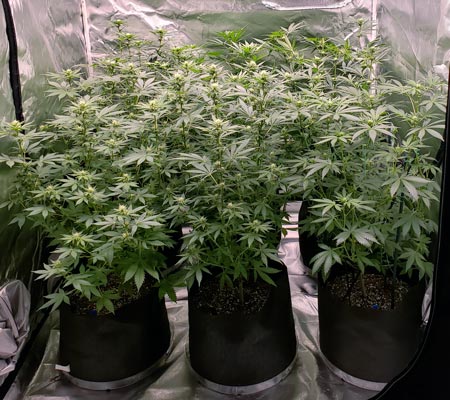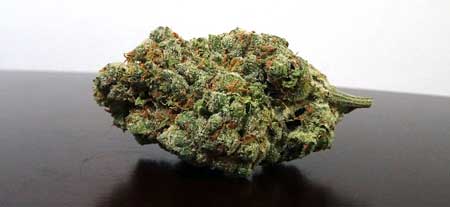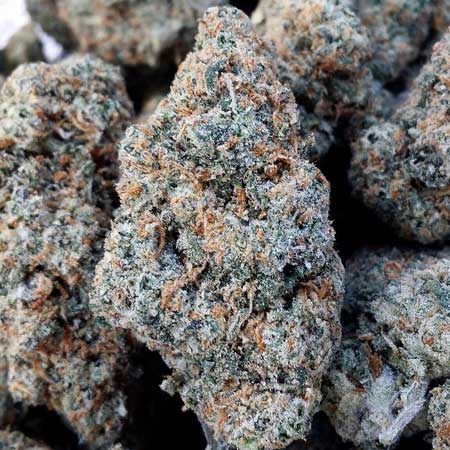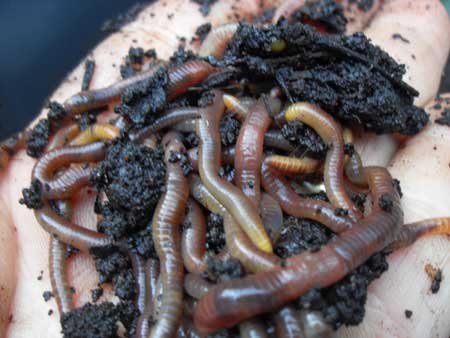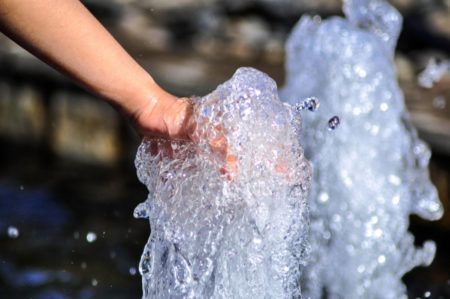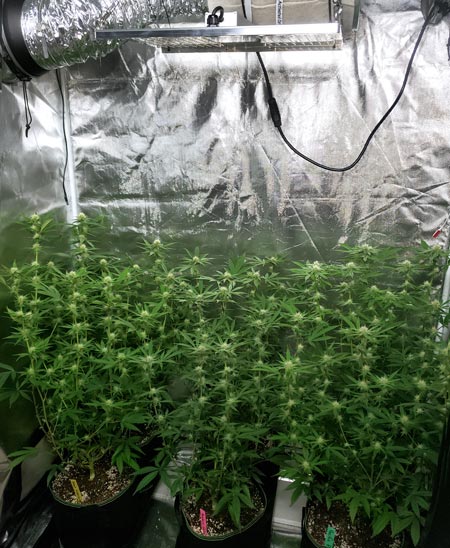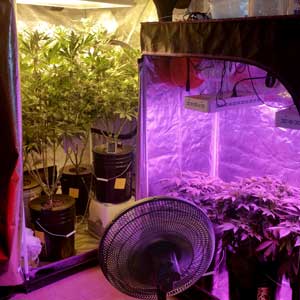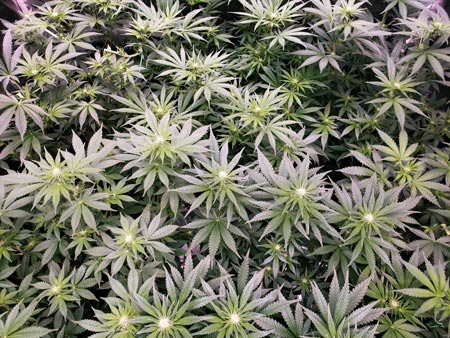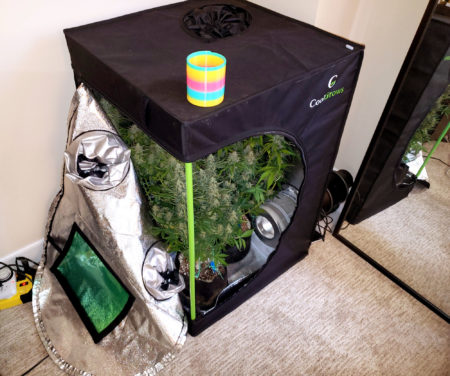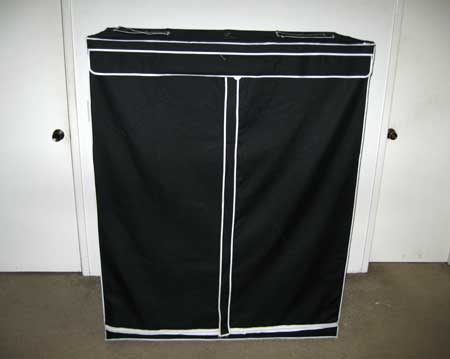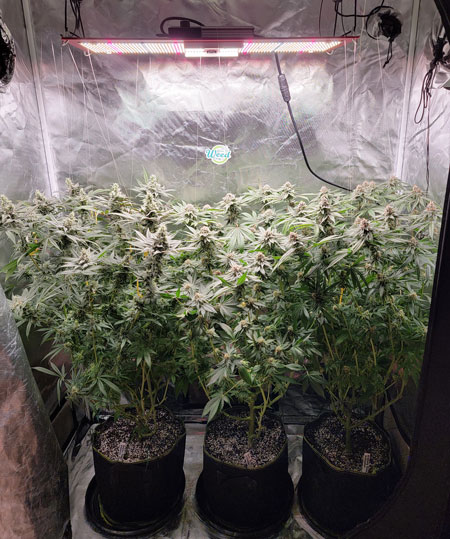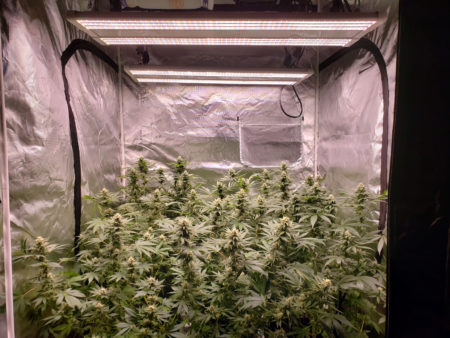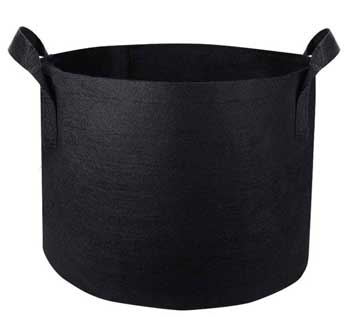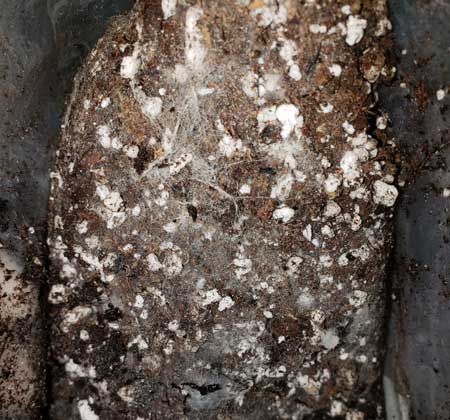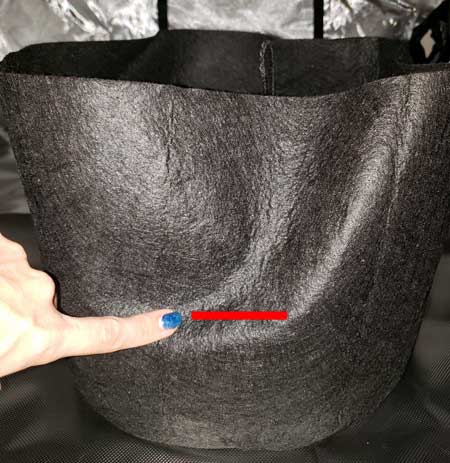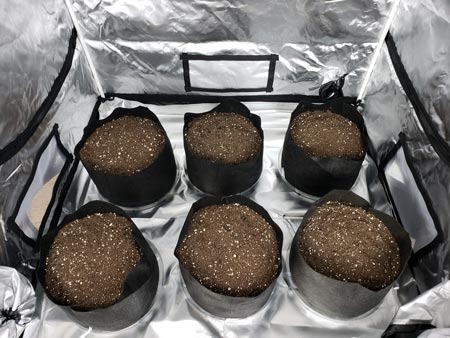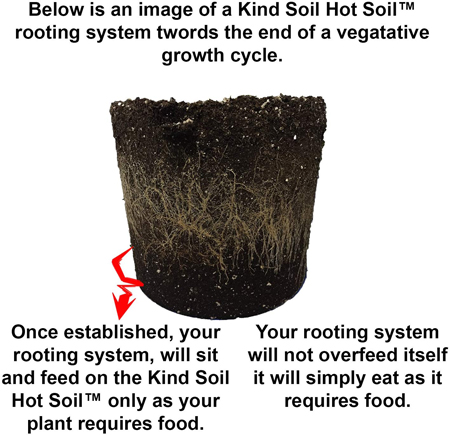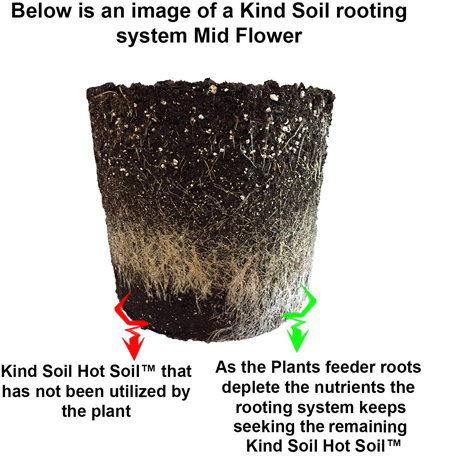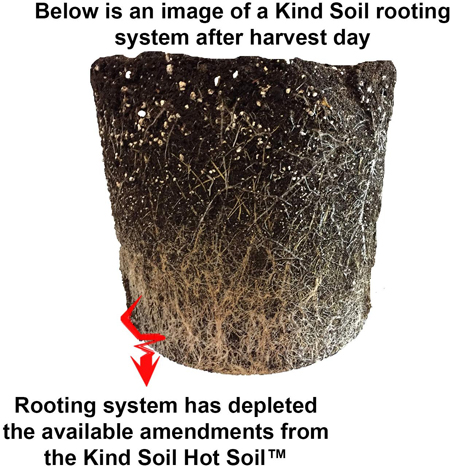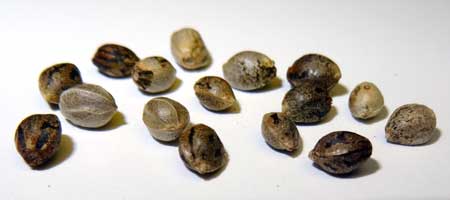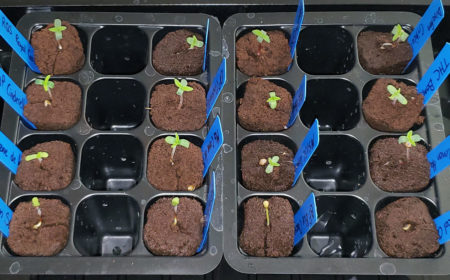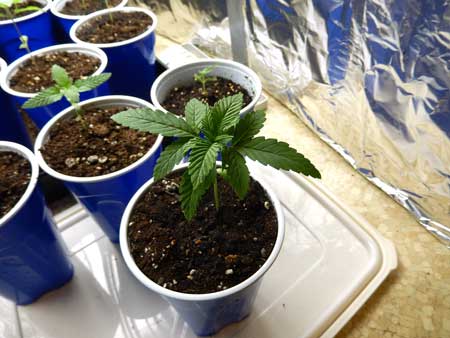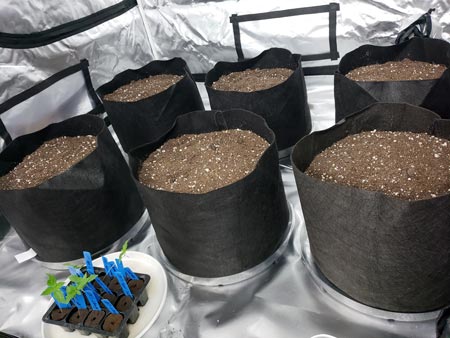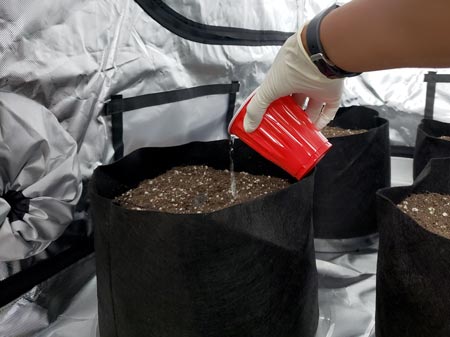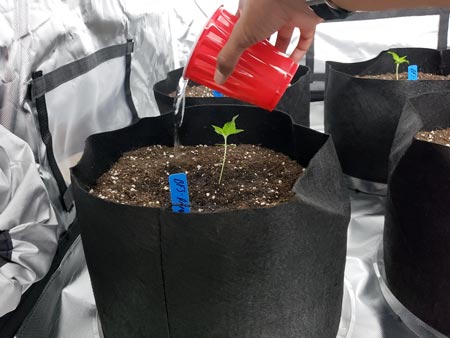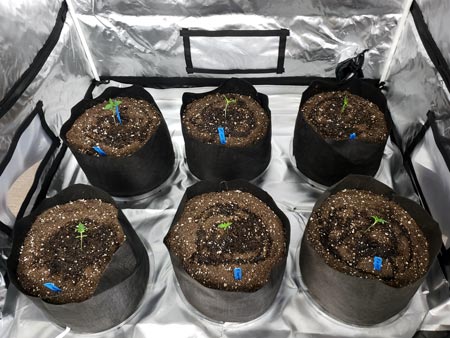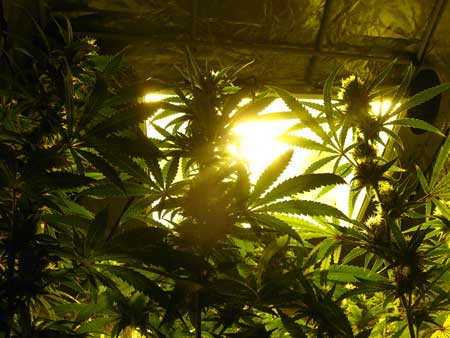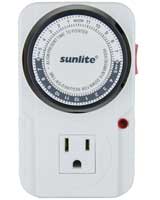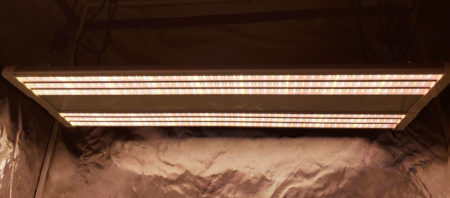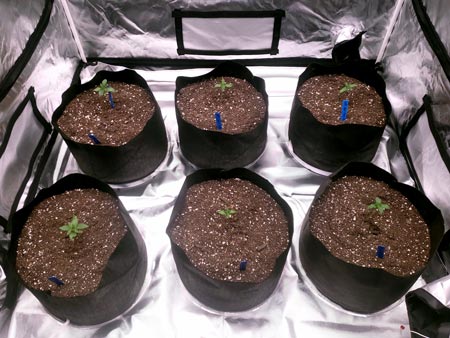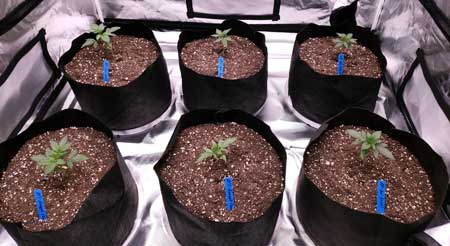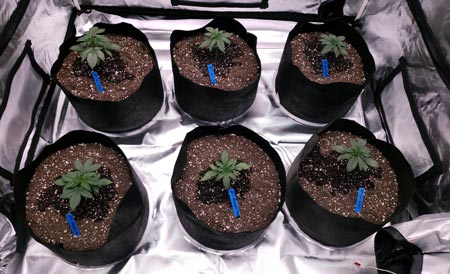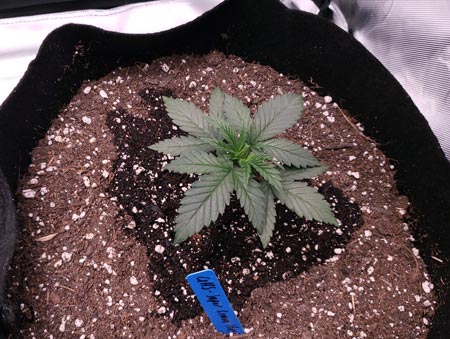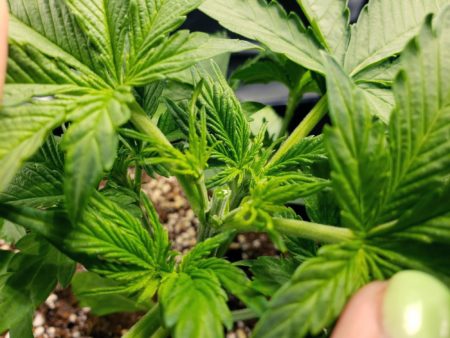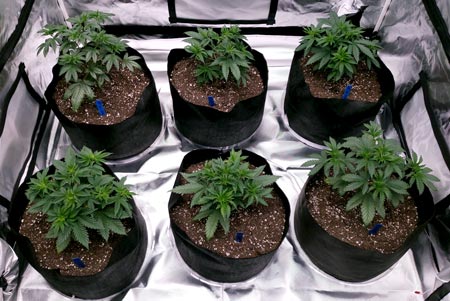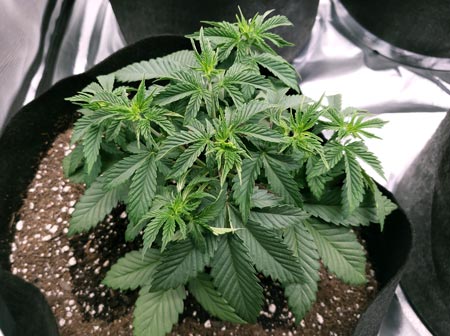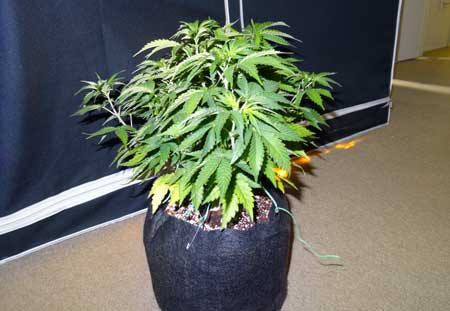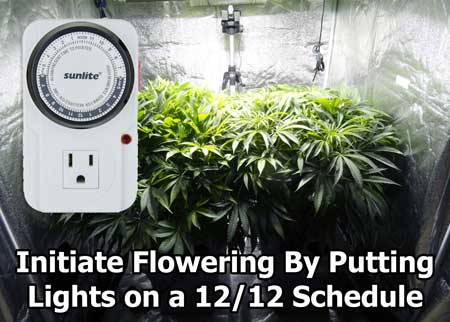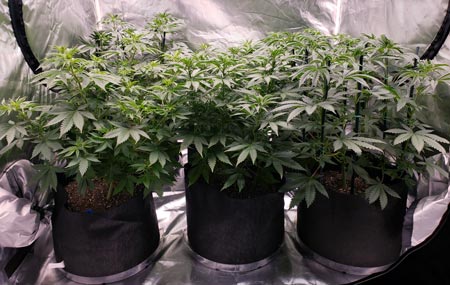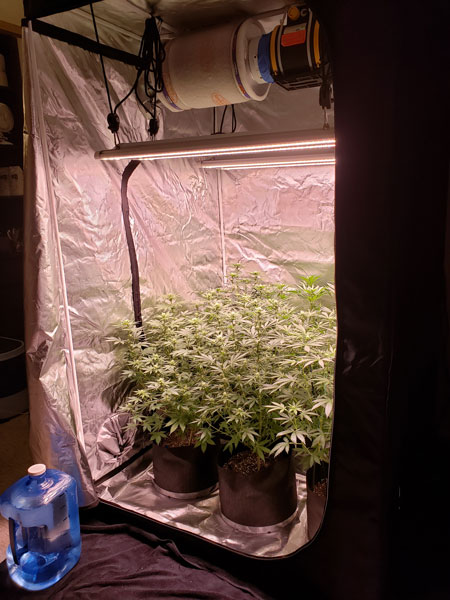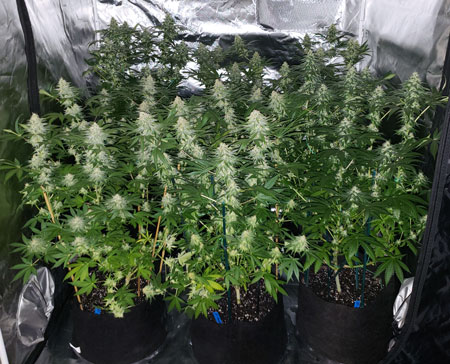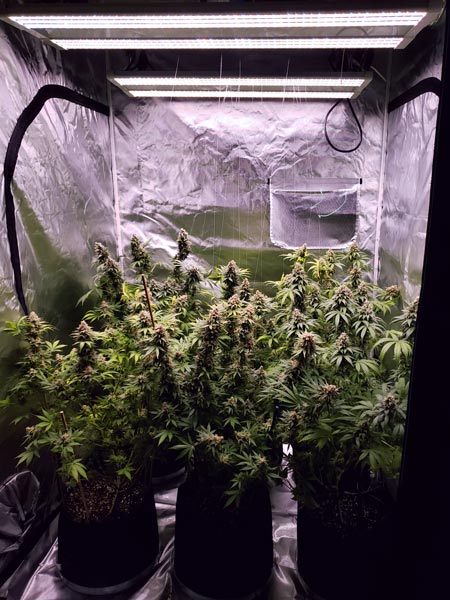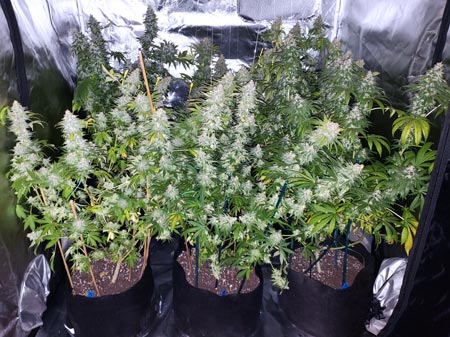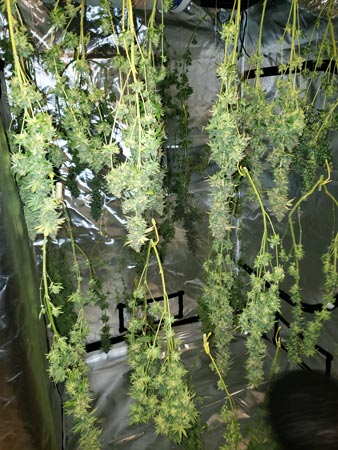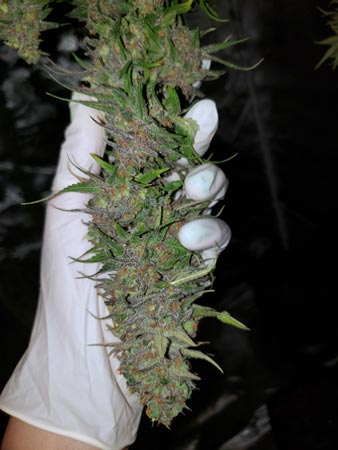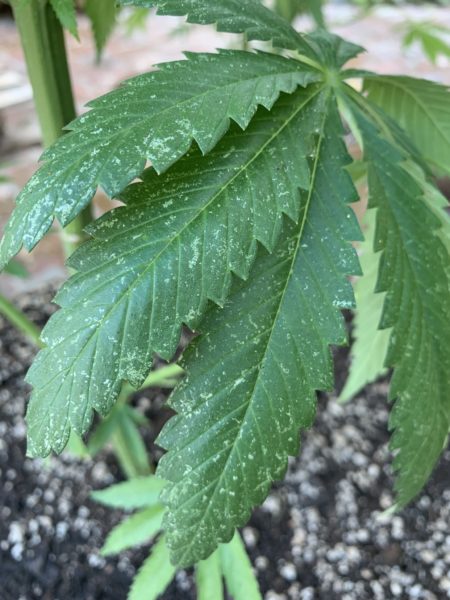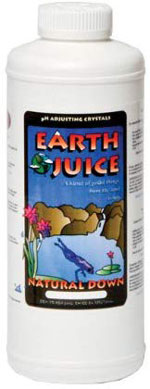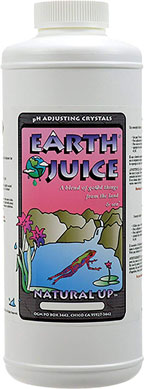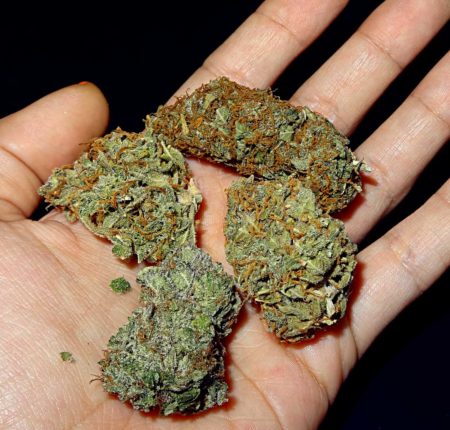by Nebula Haze
Dreaming of growing organic weed in your cannabis garden? Want a “just add water” cannabis growing experience? Whether you’re thinking about growing weed for the first time, or you’ve already grown a few cannabis plants and want to try something new, today’s organic growing method keeps it natural with zero fuss. This tutorial was made for you if you want to grow top-shelf organic weed the easy way.
As more people are legally able to grow cannabis at home, organic grow methods are getting more popular. Consumers demand better choices. It used to be difficult for many people to get access to organic cannabis (black market weed was rarely grown organically). Now you can grow your own!
With the right technique, it’s surprisingly easy to grow organic weed at home. In fact, growing organically may actually be easier than other grow methods.
Why grow organic weed using this grow tutorial?
- Let Nature Do the Work – The method in this article creates a soil environment that does most of the work of growing for you, by delivering nutrients to the roots just like in nature.
- Top Bud Taste & Smell – Many growers believe that growing organic weed (properly) creates the best bud taste and most complex bud smell of any grow method. There are also reports that organic weed tends to be smoother to smoke. In my tests, buds grown in Super Soil had lab results with higher overall levels of terpenes (smells) than clones grown in coco coir in otherwise identical conditions. Check out some of our other cool growing experiments.
- Safe, Healthy Weed– Organic growing lets you know what’s in your weed. When you’re buying weed from someone else, you have no idea what chemicals or pesticides may have been used during the grow process. Even if you’re growing for yourself, nutrient companies are not legally bound to list all ingredients in their products. That means you may be unknowingly giving your plants unwanted ingredients if you use bottled nutrients or supplements. Even worse, some nutrient companies have been busted for including illegal compounds (such as synthetic PGRs) that are known to be harmful to humans. Organic grow methods give you confidence that there aren’t potentially dangerous human-made compounds getting deposited into your weed.
- Easy Perfect Nutrients – Never worry about mixing bottles of nutrients to get the perfect nutrient ratio for your plant’s stage of life. If you follow the instructions on this page, your plants won’t get nutrient deficiencies and you won’t need to do anything to prevent them. In fact, this method lets your roots “pick and choose” which nutrients to uptake, so your plant gets exactly the right nutrients at the right time.
- “Just Add Water” Method is Easy – This tutorial teaches you how to complete a “just add water” grow. Once you’re set up, you mainly just water your plants every few days for a few months until harvest. When it comes to plant care, this particular grow method is one of the least time-consuming.
Supplies – What You Will Need
- A place to grow – indoors, outdoors, your closet… This is the 4’x4′ grow tent setup I used for this tutorial that can yield over a pound. Here’s a smaller closet-sized 2’x4′ setup I used with this super soil mix that can yield up to 13 oz in ideal conditions.
- Grow light (or a spot with direct sunlight outdoors)
- Super soil amendment (“hot soil”, composted and amended soil) – You can make your own super soil but for the first grow you may want to buy super soil to see how much you like this method. I’m currently using Nature’s Living Soil and it’s been a great experience so far. You need 1 pound of Nature’s Living Soil concentrate for every 5 gallons of pot size (a 5-pound bag of Natures Living Soil super soil concentrate makes 25 gallons of soil). I like that Nature’s Living Soil came with clear directions on how to use the soil, store any leftovers, and re-activate it for your next grow.
- Regular organic potting soil – In addition to the super soil at the bottom, you need to fill your pots the rest of the way with regular soil. The bottom 1/3 of your pot will contain the super soil amendment, which acts as a “nutrient reservoir” for hungry roots to dig into as needed. The top 2/3 of your pot will be filled with regular soil so young plants don’t get overloaded with nutrients before they’re ready. Almost any high-quality organic potting soil mix is suitable. Recommended: Fox Farm Coco Loco. I’ve found seedlings and young plants tend to grow faster in soil mixes that use coco instead of peat moss, but any high-quality organic potting soil (like Roots Organics Original) works well, too. Just don’t use an inert grow medium such as plain coco because your seedlings need to get their nutrients from the soil.
- Plant containers – I recommend using 5-gallon fabric pots
- Water – A good source of water is essential to success when using this “just add water” method.
- Cannabis seeds or clones – Of course, you need the actual weed plants 🙂
Super soil contains lots of goodies for your plants, including a whole bunch of worm castings!
What type of water should I use?
When growing cannabis with composted super soil, you want to use a clean source of water. You don’t want to use distilled water, as it can mess with the soil ecosystem, but most sources of water should be okay as long as the pH isn’t very high or low. If the pH of the water is outside the 6.3-7 pH range, it can disrupt your soil cycle and cause nutrient deficiencies. That means if you may need to adjust the pH of your water before giving it to plants (instructions below). Additionally, if you have very hard water (high PPM), it may interfere with your root’s natural processes. For example, if your tap water has tons of chloramine or chlorine to kill bacteria, it may also kill the beneficial microbes living in the soil.
Unless you have your own awesome source of water at home, I’ve found the best results in organic growing come from using spring water (not filtered or distilled water). Bottled spring water typically contains a small amount of minerals and nutrients, yet has a neutral pH around 7. No chloramine. Perfect.
That being said, I’ve seen many growers get great results using tap water and simply adjusting the pH to the right range. So it definitely depends on your particular water source. Since plants tend to be more resilient when young, you might try using your tap water and seeing how plants react. But if you start seeing nutrient deficiencies with tap water even after correcting the pH, the number one culprit is likely your water source.
Get Set Up to Grow Organic Weed
1.) Set Up Your Grow Environment
If you’ve already got your plant environment set up and are happy with it, skip to the next step. If not, I’ve got you covered. It is common to feel confused when trying to pick the best grow setup for your goals because there are tons of ways to set up a cannabis garden.
What’s most important to remember? If growing indoors, you need a grow light and a place for roots to live. This article will explain what soil to get, so if you’re following this tutorial your main choice is picking a grow light. The other really important thing about your setup is you need to be able to give your plants total darkness for 12 hours a day on a regular schedule (unless growing an autoflowering strain). This is done by putting your grow lights on a timer and ensuring no light gets to your plants during their “night”. A 12/12 light schedule is how you get plants to make flowers, so your grow space needs to be light-proof if you want to get buds. If you read this paragraph, you just took a crash course on growing. You now know the basics of growing cannabis.
Basics of getting set up to grow organic weed indoors: You need a grow light, the soil, a light-proof grow area, and a timer. Pretty much everything else is optional.
Where to actually grow? Although you can get great results without one, I highly recommend getting a grow tent with exhaust fan and carbon filter. This gives you a self-contained space for your plants that vents heat and prevents smells from leaking out. When it’s time to initiate the flowering stage, a grow tent is already light-proof so you don’t have to think about light leaks. A grow tent is also surprisingly discreet (especially the smaller ones) and often cheaper than building your own grow space from scratch. Plus they’re reflective, waterproof, easy to move around, and specifically designed to give you a place to hang your light and create an ideal plant growing environment.
Where is the best place to grow in the house?
Grow tents give you a cheap “pop up” cannabis grow environment
What You Need for a Perfect Growing Environment (from most important to least important)
- Light – Bright but not too bright
- Temperature – Comfortable for you, comfortable for your plants
- Air Circulation – Fresh air plus a gentle breeze
- Reflection – Cover your walls with a reflective material to get more light to your plants
- Humidity – Control humidity to help plants grow faster and increase resin production
Learn more about creating a great growing environment
What grow setup did we use? The plants pictured in this tutorial were grown under 600W of LEDs similar to this setup.
This is what plants look like under the pinkish-white light of quality modern LEDs. The best cannabis LEDs for flowering have a custom “wideband” spectrum designed to grow cannabis plants.
If you’re not sure what to get, here are some recommended super soil setups with shopping lists and Amazon links to make sure you get everything you need.
2’x2′ Grow Tent – Small
- Ultra short edition – 3′ tall
- 65W – HLG 65 LED Grow Light
- 1-3 oz per harvest
- $300 to get started
- Room to grow – 4′ tall
- 100W – SF-1000 LED Grow Light
- 2-4 oz per harvest
- $430 to get started
Example of a 2’x2′ grow tent
2’x4′ Grow Tent – Medium
- Standard Power – 5′ tall
- 200W – SF-2000 LED grow light
- 5-11 oz per harvest
- $555 to get started
- Max Power – 6′ tall
- 350W – HLG 350R LED grow light
- 8-14 oz per harvest
- $890 to get started
- Over Power – 6′ tall
- 315 LEC or 400W HPS (dimmable)
- 7-16 oz per harvest
- $745 to get started with 315 LEC
- $495 to get started with a 400W HPS
Example of a 2’x4′ grow tent (about the size of a standard closet)
Here’s my current grow inside one of these right now. I think this is the perfect size for most home growers because it can yield many ounces up to a pound per harvest depending on the grow light you use.
4’x4′ Grow Tent – Large
- 1 lb LED Producer – 6.5′ tall
- HLG Blackbird 600W LED grow light
- 10-22 oz per harvest
- $995 to get started
- 1 lb HPS Producer 6.5′ tall
- 600W HPS (dimmable)
- 10-21 oz per harvest
- $495 to get started
Example of a 4’x4′ grow tent (easily yield a pound) – these plants were grown according to this super soil tutorial!
2.) Choose a Plant Container
Your plants need a place for roots to live. I personally am a huge fan of fabric pots, which let air in from the sides. Plants grow faster in fabric pots than traditional hard-side containers because roots thrive when they get plenty of oxygen.
I recommend using 5-gallon fabric pots for this grow method. I use the Vivosun ones but any brand of fabric pot will work!
The air from the sides “air prunes” the roots, which prevents the roots from “choking” themselves by wrapping around the edges of the pot. Any roots that try to circle the outside edges will be pruned by the air. As a result, plants grown in a fabric pot typically won’t get rootbound.
The main difference between fabric pots and hard-sided pots (from a grower’s perspective) is fabric pots dry out faster because the air from the sides causes water to evaporate. Therefore if you’re following this tutorial but using traditional hard-sided pots, you will need to water much less often than recommended in the watering schedule below.
Learn more about smart pots vs regular pots.
What size pots?
I recommend using 5-gallon fabric pots for this tutorial. This ensures that your plants have enough nutrients to last all the way to harvest. When growing in smaller pots, you run the risk of the plant using up all the nutrients in the super soil before the end of the grow. If that happens, you may end up with nutrient deficiencies and have to supplement with extra nutrients to keep plants happy and healthy. One of the benefits of this grow style is you don’t need to worry about nutrients, so don’t get too small a pot.
The plants pictured in this tutorial used the brand name 5-gallon Smart Pots, but any fabric pots will work. The generic options are more reasonably priced. These days, I usually use Vivosun fabric pots, though I’ve tried others and so far they all work well. I like that the Vivosun fabric pots are cheap and come with convenient handles.
3.) Fill your container with 1/3 super soil mix (follow directions on bag), then top off with regular soil
Don’t mix all your soil together! Keep the super soil mix in the bottom 1/3 of the pot. This helps conserve nutrients until harvest. When everything is mixed together, growers are more likely to run into nutrient deficiencies partway through the grow.
It’s always best to see if the company has specific instructions for their soil, but here are some general guidelines.
- Super Soil Amendment: If you have a concentrated amendment like Nature’s Living Soil, mix the amendment with 1/3 of your regular potting soil and use that to fill the bottom of each pot. Then top off with regular soil. These directions will also be on the bag itself.
You may see mold growing on the top of your super soil. This is normal. This is “living” soil and the mold is part of the soil ecosystem. Just mix it in.
Fill the bottom of pots 1/3 of the way with super soil mix (about 1 pound of super soil concentrate per 5 gallon pot, mixed partially with regular soil as stated on the directions)
Fill the remaining 2/3 with Coco Loco (or other high-quality organic soil potting mix)
The Coco Loco is situated at the top of the container so you do not burn young plants or clones with too high levels of nutrients. However, once their roots reach down to the super soil, the plants will be mature enough to use the rich source of nutrients without worrying about nutrient burn.
Cannabis roots mostly stay in the regular potting soil, but use the bottom super soil layer as a “nutrient reservoir”
Excited to get started? Let’s go!
How to Grow Organic Weed
Now that you’ve got your supplies and set up your grow space, there’s not much you need to do besides germinate your seeds, water your plants and provide a comfortable growing environment (plenty of light, warm but not hot). Here’s a step-by-step guide so you stay on track.
1.) Germinate your seeds
Of course, make sure your garden is ready first before germination! You’ve chosen a place to grow, you’ve got your pots and soil, and your grow light is set up, right?
Ok! Time to put your seeds (or clones) into their new homes! But where to get seeds safely?
View a list of tested & trusted online seed vendors.
Germinate seeds in seedling plugs (like Rapid Rooters) or a solo cup of Coco Loco for the best results.
Germinate seeds in seedling plugs or…
Plant seeds directly into a solo cup filled with Coco Loco (you can also plant seeds directly in grow medium, but seedlings usually grow a bit faster if you start them in a smaller container)
2.) Transplant seedlings to final containers
Transplant seedlings to your 5-gallon fabric pots when they’ve grown 1-2 sets of leaves in seedling plugs, or when the leaves reach the edges if you’ve germinated in a solo cup. If you’ve planted your seeds directly in the final containers, skip this step.
Get your seedlings
Water each pot in the middle with 2 cups (500ml) of water. This creates a nice moist base for your seedlings.
Make a hole a bit bigger than the size of the seedling plugs (or solo cups if you used that)

Water each seedling with an additional 2 cups (500ml) water
It should look something like this when you’re done
2.) Give plants 18-24 hours of light a day
Young cannabis plants do best when given 18-24 hours of light a day.
What’s the best light schedule? It depends on your goals.
With 18 hours light/day…
- You must put grow lights on a timer so plants get the same light schedule every day
- Plants tend to be more resistant to problems when they get a dark period
- If you’re struggling with high temperatures in the grow space, set the dark period for the hottest part of the day to help keep plants from overheating.
With 24 hours light/day…
- No need for a timer, just plug lights in
- Plants tend to grow a bit faster
- Plants are less resistant to problems when they don’t get a dark period, but should stay healthy and happy if you give them a great growing environment
- If you’re struggling with cold temperatures, 24 hours of light a day can help keep plants warmer. If you absolutely need to keep lights on 24 hours a day for warmth, consider getting an autoflowering strain because you can keep them on 24 hours of light a day from seed to harvest.
You can also go between 18-24 hours of light a day for a mix of benefits. For example, lots of growers give plants 20 or 22 hours of light a day. Faster growth than 18 hours, but plants still get a little bit of a rest period. Anything between 18-24 works great!
Put grow lights on a timer so they get the same light schedule every day
How far away do I keep grow lights? Here’s a quick guide but the best thing you can do is see what the manufacturer of your light recommends. They’ll know better than anyone what the optimal distance is for your particular model of grow light.
Follow the manufacturer’s recommendation on how far to keep lights from tops of plants
3.) Water Plants Regularly
I’ve included an example watering schedule for seedlings in 5-gallon fabric pots (bottom 1/3 super soil and top 2/3 regular soil) for the first 30 days. This is designed for seedlings that have already grown their first set of “real” leaves. If you’re planting seeds directly in soil instead of germinating ahead of time as described above, give 1 cup of water every 3-4 days (basically just keep the soil around the seed moist but not wet) until you see the first set of serrated leaves, then start using this schedule…
2 days later the seedlings should be watered again. View the schedule below for an example watering timeline.
- Day 1 – Give 2 cups (500ml) water per plant (you should have done that in the above step when you installed your seedlings)
- Day 3 – Give 2 cups (500ml) water per plant
- Day 6 – Give 2 cups (500ml) water per plant
- Day 8 – Give 3 cups (750ml) water per plant (every 3 days after this)
- Day 11 – Give 3 cups (750ml) water per plant
- Day 14 – Give 4 cups (1 liter) water per plant
- Day 17 – Give 4 cups (1 liter) water per plant
- Day 20 – Give 5 cups (1.25 liter) water per plant
- Day 23 – Give 6 cups (1.5 liter) water per plant
- Day 26 – Give 6 cups (1.5 liter) water per plant
- Day 29 – Give 8 cups or 1/2 gallon (2 liter) water per plant
- Continue giving 1/2 gallon (2 liters) per plant every 3 days. You may need to give more at a time or more often as plants get bigger. If you ever get any significant runoff out the bottom, it means you should be giving less water at a time. If plants get droopy before being watered, you should give more water at a time, or water more often.
Note: This is the schedule that I use, but your environment will affect how much plants drink. If plants are in hard-sided pots as opposed to fabric pots, you’ll need to water far less often. If you notice that plants are getting droopy before you water them, give more water at a time. It’s unlikely your plants will be overwatered with this schedule, so you probably won’t need to lower the amount of water. If you would like to water less often than every 3 days, you’ll need to give more water at a time.
Typically the top of the soil will look mostly dry before watering again
How to water plants in super soil after 30 days:
- Give just enough water to wet the medium thoroughly, but don’t give enough water that you get runoff. If you touch the bottom of your fabric pots, you will be able to tell if they’re moist or dry. When the soil is moist the fabric pots will feel cool to the touch.
- Wait until the top layer of soil feels dry before watering again
- When in doubt, water less! It’s super easy to overwater plants in super soil. You can always add more water but you can’t take it back out.
Note: Unlike some other growing mediums, your plants will grow best if you avoid getting runoff water out the bottom. It’s easy for plants to get overwatered in super soil, plus runoff water will carry away nutrients. Since you’re not adding any extra nutrients from seed to harvest, you want to conserve the nutrients you do have.
Here are the seedlings on day 8, just after being watered
Give water in a circle around the base of the plant
Important Tips
- Keep roots warm – If the floor of the grow space tends to be cold (for example in a basement or garage), keep plants from sitting directly on the ground. Warmth is important for the colony of organisms at the roots to thrive, and cannabis also tends to grow better with warm (but not hot) roots.
- Use good starting water to prevent problems. I like spring water for this grow style. It usually has a neutral pH and contains some extra minerals and nutrients that aren’t found in filtered or RO water. However, any clean source of water in the right pH range should work.
- Don’t ignore water pH! Ideally, your starting water should be in the 6.5-7 pH range to avoid nutrient deficiencies. A little lower is okay (down to 6.3) but not higher. Pure water naturally has a pH around 7, so if you’re using good water you won’t need to think about this. I know many people say you don’t have to worry about pH in super soil, but that’s only if you’re starting with good water. You WILL get nutrient deficiencies if the pH of your water is too high or low and you don’t adjust it. If your starting water is in the 6.3-7.0 pH range, you don’t need to do anything. However, if it’s outside that range you will have to adjust the pH of your water. Don’t use regular PH Down or PH Up adjusters, as they will kill microbes in the super soil (plus they’re not organic). If you must adjust the pH, use Earth Juice Natural Down (citric crystals) to lower the pH, or Earth Juice Natural Up (potassium bicarbonate) to raise the pH. These are organic and won’t hurt your soil. If you’re adjusting the pH down, try to get it to 7.0 pH. There’s no need to bring it lower because citric crystals can build up in your soil, which tends to drop the pH of the soil slowly over time. Similarly, if adjusting the pH up, try to bring it to 6.5 pH, so potassium bircarbonate doesn’t build up. Basically, use as little pH adjusters as you can to get the water within the right range. Learn how to adjust the pH of water.
3b.) Consider plant training (optional)
You can let plants grow naturally without any additional manipulation, but I highly recommend at least topping your seedlings (cutting off the top tip) above the 5th set of real (serrated) leaves when plants are still young. This will cause your plant to grow multiple main buds instead of one. The super soil method will support almost any plant training technique.
If you want plants to grow multiple buds instead of just one, “top” them (cut off the top tip) above the 5th set of serrated leaves.
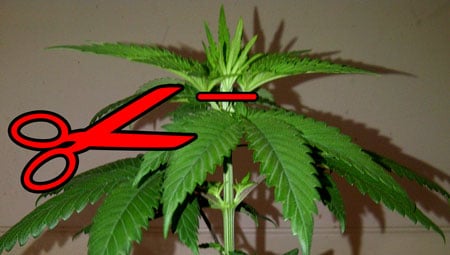
Try to spread out branches as plants grow to help them “bush out”
Topping a plant produces more growing tips, which will each turn into its own main bud once the plants start flowering. A growing tip looks sort of star-shaped from above. Make sure each of these “stars” gets access to direct light as plants grow or they won’t keep developing. Ideally, you want 6-10 growing tips to reach the top of the plant before the flowering stage. This helps the plant grow tons of buds instead of just one main bud in a Christmas Tree shape. As a result, you end up with increased yields.
As plants grow, gently bend stems and tuck leaves to expose growing tips to direct light. This creates a bud monster once plants start flowering!
Bending stems down also gives you a chance to control tall plants. If you notice any plants or individual branches getting taller than the others, simply bend it down and away from the center of the plant and tie it down with some plant twist tie. Try to keep your plant canopy flat like a table-top so that all branches are about the same distance from the grow light.
If some of the branches are getting taller than the others…
…bend the tallest ones over until they’re all the same height as each other. Plant twist tie and safety pins in the fabric pot give you total control over plant shape.
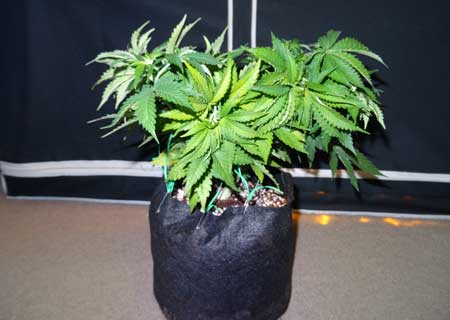
Plant training is 100% optional. You can let plants grow naturally and still get great results. But topping and bending while plants grow is pretty easy and makes a big difference to your final yields.
Learn more about training plants to grow multiple buds.
4.) Initiate the Flowering Stage When Plants are 1/2 the Final Desired Size
Outdoor cannabis plants naturally start flowering in the fall and die in the winter. When growing cannabis indoors, you have to give plants long nights for them to start making buds (unless you have autoflowering plants).
Switch to a 12/12 light schedule when plants are half the final desired size by putting grow lights on a timer
Why? Giving 12 hours of total darkness each day forces plants to start making buds because they “think” winter is coming. It’s important not to wait too long as plants will about double in height (on average) after initiating the flowering stage. If you know your plant is a “tall” strain, initiate 12/12 when plants are 1/3 the final height.
We initiated 12/12 when the plants are half the final desired height. This was about 5 weeks after they were put in the tent.
Make sure plants continue getting 12 hours of total darkness every single day until harvest. No light leaks! No peaking on plants during their dark period! If plants start getting light during their “night” they will actually stop flowering and revert back to the vegetative stage.
Learn more about light schedules and how to get plants to start making buds
Tip: If growing in 5-gallon pots as recommended in this tutorial, don’t wait longer than 2 months to initiate the flowering stage or your plants may run out of nutrients before harvest!
5.) Stay on the Lookout for Problems Until Harvest Time
The beauty of this method is you’ve already done the majority of the work. Just continue watering the plants, watching them for signs of bugs or deficiencies, and wait until buds are ready to harvest.
Here are the plants 3 weeks after initiating 12/12
Buds are forming and plants have about doubled in height. Most strains stop getting taller around week 3 of flowering.
6 weeks after 12/12 – The only care has been watering the plants and letting them do their thing.
Here are the plants just before harvest, about 9 weeks after initiating 12/12. What are those strings? We needed plant yo-yos to help hold the branches up because the buds were falling over.
The total time needed in the flowering stage depends on your strain. Some strains need less than 9 weeks while others need more time. When do I harvest my plants?
It’s normal to see some leaves yellowing right as harvest approaches. Your plant is using up the last of the nutrients in the leaves. This is part of the plant’s natural life cycle.
We dried the buds in the grow tent. How do I dry plants?
Harvest time is my favorite time!
Now you know how to grow your own organic weed at home!
If you still have questions, don’t worry, we’ve got tons of resources for you. Try using the search bar for specific questions. Or…
More resources for growing cannabis:
- Complete Beginner’s Guide
- How to Grow Weed in 10 Steps
- Diagnose Your Sick Plant
- Bugs, Mold & Other Cannabis Pests
Cannabis Life Stages
Plant Care Tutorials
- Cloning
- Plant Training
- How Often to Water Plants
- Male vs Female Plants
- The Perfect Environment
- How to Control Smell
- How to Set Up Exhaust
How to Improve…
How to Troubleshoot Problems in an Organic Cannabis Garden
When it comes to organic growing, mother nature does most of the work for you. However, if you notice problems in the cannabis garden, you should react quickly! I’ve put together this short guide of organic ways to deal with the most common cannabis growing problems or symptoms you might run into.
Organic Ways to Deal with Common Pests
- Spinosad (not for commercial growers) – Organic and effective against…
- Insecticidal soaps – Fatty acid salts or insecticidal soaps weaken the outer shell of bugs but are safe for humans and don’t leave much of a residue. Many are listed for organic gardening. Effective against…
- Horticultural oils – Lost Coast Plant Therapy is on the expensive side but it’s organic and extremely effective against nearly all cannabis pests. Essentria IC3 and Monterey Horticultural Oil Concentrate are other great options. You will need a mister to apply these treatments. Effective against…
- BT Spray – Labeled as caterpillar “BT” sprays and concentrates. This is a safe biological insecticide containing the bacillus thuringiensis (BT) bacteria. BT kills caterpillar larva by preventing them from eating. This is one of the most effective ways to kill caterpillars, and won’t hurt most beneficial insects. Apply a caterpillar BT spray as soon as you see leaf damage, caterpillars or caterpillar poop (little dark specks on your leaves). BT sprays work best on small caterpillars that are actively eating your leaves. Repeat every week for as long as you’re still seeing caterpillars, though you can give BT more often if there’s a heavy infestation. Make sure to thoroughly mist both the tops and bottoms of leaves, and apply again after a heavy rain (since that will wash the BT away). Since BT is harmless to humans, you can use BT products on flowering plants as long as you don’t get any on buds. One thing to keep in mind is BT spray almost instantly stops caterpillars from being able to eat, but doesn’t kill them directly. So although you may see the caterpillars alive and apparently unharmed after spraying, the BT is still doing its dirty work.
- Diatomaceous Earth is basically fossil dust that you sprinkle on the top of your soil or anywhere else in your grow space(window sills, doorways, etc.). This powder-like substance is harmless to mammals and plants but is incredibly sharp at the microscopic level. Therefore, it will tear and dehydrate bugs on physical contact. Almost every type of bug is at least deterred, but it’s particularly effective against smaller soft-bodies insects and larva (including Fungus Gnats)
- Beneficial organisms – Kill bugs with beneficial insects and organisms like ladybugs, predatory wasps, or nematodes
- Learn about additional safe ways to kill insects
See pictures and get solutions to the most common cannabis pests.
Example of leaf damage from thrips, a common cannabis pest
Other common problems to avoid:
- Bad starting genetics – Getting sabotaged by seeds is like buying a bad melon. You don’t realize anything is wrong until it’s go-time. Where can I get good seeds?
- Bad starting water, especially if the PPM is high (very “hard” water that’s full of minerals and other stuff) or if the pH is outside the 6.3-7 pH range. You can take steps to correct issues, and correcting the pH goes a long way, but the worse your starting water, the more variables it can introduce that could put you off track.
- Overwatering (and occasionally underwatering) – follow our schedule to make it easy
- Bugs – Bugs can be especially troublesome for people who have a garden or live near a wild outdoor area. Also for people who live close to many other people with balconies, outdoor areas with potted plants, or who have their own gardens (for example in a high rise or residential community). If your home is surrounded by plants that aren’t well cared for, even if they’re not your plants, it can be easy to get bugs. Some common way growers get bugs are:
- your home is surrounded by people with balcony plants or gardens – it takes just one bad rose owner nearby to ensure your outdoors is populated with thrips, aphids, and spider mites.
- going from outdoors directly to the grow area
- visiting another cannabis garden
- getting clones from someone else
- holes in screens or other ways for bugs to enter the home
- any exposure to plants with bugs, including bouquets of roses or someone giving you their homegrown vegetables
- overwatering – attracts fungus gnats
- keeping plants in an open room, basement or garage instead of keeping an enclosed grow space. Grow tents are a great way to help prevent all kinds of bugs getting on your plants, including ones that just happen by like carpenter beetles or spiders (no one wants a spider web on their buds at harvest!)
- Seeing a bug on your plant is like finding a piece of plastic in your food. You may not know what exactly it is, but you hate and want it gone!
- Not thinking about your soil as a reservoir or root environment that you need to care for. With soil, you’re taking care of the soil, and the soil is taking care of the plants. If you follow all the instructions and tips in this tutorial, you will be good!
Don’t ignore water pH!
Ideally, your starting water should be in the 6.5-7 pH range to avoid nutrient deficiencies.
A little lower is okay (down to 6.3) but not higher. Pure water naturally has a pH around 7, so if you’re using good water you won’t need to think about this.
I know many people say you don’t have to worry about pH in super soil, but that’s only if you’re starting with good water. You WILL get nutrient deficiencies if the pH of your water is too high or low and you don’t adjust it. I’ve learned this from experience. If your starting water is clean and in the 6.3-7.0 pH range, you probably don’t need to do anything.
However, if your water is outside the 6.3-7 pH range you will have to adjust the pH of your water.
Don’t use regular PH Down or PH Up adjusters, as they will kill microbes in the super soil (plus they’re not organic). Instead…
Use Earth Juice Natural Down (citric crystals) to lower the pH in super soil. Other options include lemon juice and vinegar, but they’re less consistent.
Use Earth Juice Natural Up (potassium bicarbonate) to raise the pH. Another option is baking soda, but again it’s often less consistent.
These are organic and won’t hurt your soil. If you’re adjusting the pH down, try to get it to 7.0 pH. There’s no need to bring it lower because citric crystals can build up in your soil, which tends to drop the pH of the soil slowly over time. Similarly, if adjusting the pH up, try to bring it to 6.5 pH, so potassium bircarbonate doesn’t build up.
Basically, use as little pH adjusters as you can to get the water within the right range.
Learn how to adjust the pH of water.
Start growing your own beautiful organic cannabis today!

